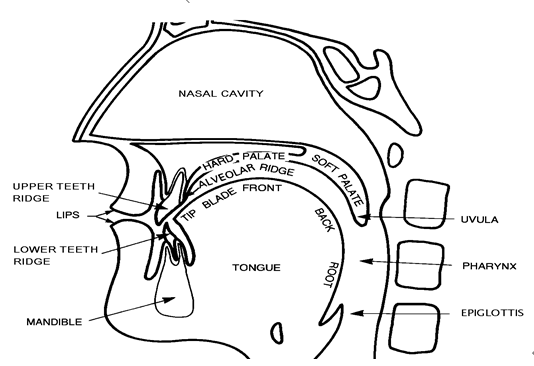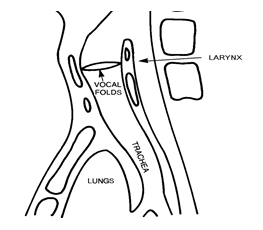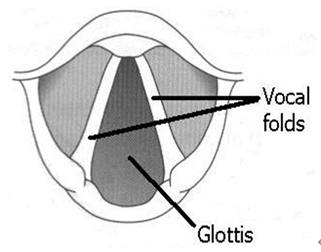Chapter 1
 2.2 The sound-producing mechanism
2.2 The sound-producing mechanism
I.Brainstorming
Speech sounds are produced by various speech organs. Can you list some speech organs?
II. The speech organs

Where does the air stream come from?
From the lung

Where is the sound source?
The sound source is the larynx, inside which two fine sheets of muscle called the vocal cords (folds) are located across the end of the windpipe

What is the function of vocal cords? >
Controlling the air stream
(1) The local cords may be closed tightly so that the air stream from the lungs is blocked and the air pressure behind them builds up.
(2) If the vocal cords are brought together to the extent that there is only a narrow passage between them, the pressure of the air stream will set them in vibration.
(3) When the vocal cords are drawn wide apart, as in normal breathing without speaking, the air stream passes through the glottis freely and produces a faint sound.
What is the difference between egressive and ingressive sounds?
(1) All the English and Chinese speech sounds are produced with the air stream pushed out of the glottis, thus called egressive sounds.
(2) Some speech sounds are produced with the air sucked in instead of flowing out, these sounds are called ingressive sounds
What are the cavities?
(1) Pharyngeal cavity
(2) Oral cavity: it contains most of the articulators, namely, the uvula, the velum, the hard palate, the alveolar ridge, the teeth, the lips and the tongue.
(3) Nasal cavity
III. Conclusion
The air stream comes from the lung and the sound source is the larynx which contains the vocal cords. Vocal cords can control the air stream and modify the states of glottis. Speech sounds are produced with the air stream pushed out of the glottis called egressive sounds, while the speech sounds are produced with the air sucked are called ingressive sounds. Cavities include pharyngeal cavity, oral cavity and nasal cavity
